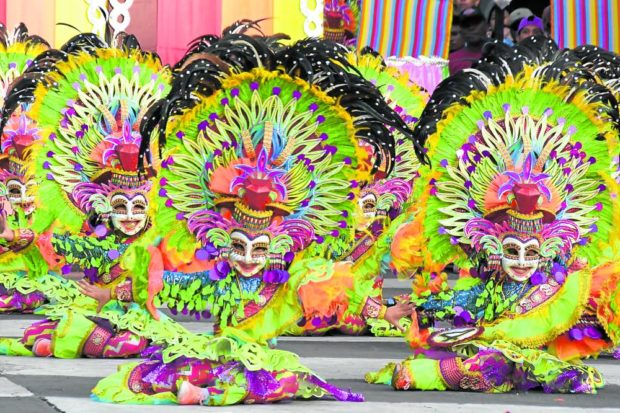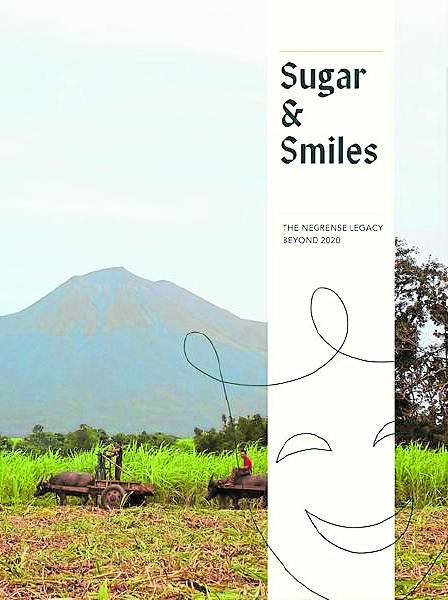
Did you know there was, for a very brief time, an independent Republic of Negros? For a very short interim, the republic existed independently of the Spanish regime, thanks to a well-timed revolt by the Negrenses. This story is told in an action-packed sequence beginning on page 21 of “Sugar & Smiles: The Negrense Legacy Beyond 2020.”
This is executive editor J. Albert Araneta Gamboa’s bet that will surprise most readers: “The establishment of the short-lived Republic of Negros on Nov. 5, 1898, is the most significant part of Negrense history that we wanted to emphasize in this book. It was the product of a bloodless revolution against Spanish colonialism that continues to be celebrated up to now as a public holiday in Negros Occidental called Cinco de Noviembre.”
Gamboa explains that the book needed to be made because “the rich heritage of Negros Occidental deserves to be written about. Negrenses played a major role in Philippine society from the mid-19th century to the premartial law era, and there are many colorful stories about these illustrious men and women worth sharing with the present and future generations of Filipinos.”
A book’s own story
“Sugar & Smiles” has a story all its own. “The idea for the book was hatched in 2017, when I was part of the Bacolod delegation that visited Long Beach, California, to renew their sister city ties that were dormant for 25 years,” Gamboa explains. “Officials of both cities met at the World Trade Center on the Port of Long Beach.”
Long Beach-Bacolod Association (LBBA) has members who live on both sides of the Pacific Ocean, and the book got some special support. “My California-based uncle, Joe Gamboa, chaired the LBBA, and he involved me in the reactivation of sister city relations between Bacolod and Long Beach. We also planned to publish a book for Bacolod’s 80th charter anniversary and the 120th commemoration of the Republic of Negros in 2018.”
So the project was hatched to commemorate all of this. The title was chosen by the project team’s editorial board composed of Benjamin de Leon Torre, Jose Kilayko Montalvo III, Ma. Teresita Quebrar-Manalili, Conrado Gen Fajardo Tomas and Gamboa.
“We wanted the main title to reflect the symbols of Negros Occidental as the Sugar Bowl of the Philippines and Bacolod as the City of Smiles, so we zeroed in on ‘Sugar & Smiles.’”
Interestingly, the book’s subtitle was a victim of the pandemic. It was originally “The Negrense Legacy 2020 and Beyond,” but later understandably modified to “The Negrense Legacy Beyond 2020” because COVID-19 delayed the book for an entire year.
All told, it took four years to finish the book, as Gamboa clarifies: “Producing the book in the middle of the pandemic posed the biggest challenge to our project team. The timeline was adversely affected by our inability to meet face-to-face due to the series of lockdowns. We wanted to launch the book in 2020 during the 40th anniversary of the MassKara Festival and the 130th year of the Province of Negros Occidental.”
It discusses in depth the history of Negros Occidental and Bacolod, the saga of the sugar economy, the famine and all the way to the province’s COVID response—and where it plans to go. “Sugar & Smiles” brings to the fore many of the figures who played important parts in the Negros story: Juan Araneta, Papa Isio, Aniceto Lacson, Jose Ruiz de Luzuriaga and Alfredo Montelibano Sr., among others.

One of the most fascinating aspects of “Sugar & Smiles” is how it profiled Negrense achievers in different fields, the identities of whom would surprise you. “Negrenses are the people who inhabit Negros, the Philippines’ fourth largest island,” Gamboa says. “We consider people who were not born in Negros Occidental but have lived there as our fellow Negrenses, along with those who were raised there and have transferred to other regions or countries.”
Profiles
The book profiles the late filmmaker Peque Gallaga, theater designer Toto Sicangco, ballerina Cecile Sicangco Ibarriola, actor/entrepreneur Joel Torre, director Erik Matti, violinist Gilopez Kabayao and Gawad Kalinga’s Bobby Magalona, among many others, and even has a chapter discussing the contributions of its athletes.
Gamboa says it was easy to get the personalities to talk about their roots. “All of them were very enthusiastic about their participation in this project. They were extremely proud to be part of a pioneering book that celebrated their beloved hometown by paying tribute to their Negrense roots and the people who molded them into what they are today.”
Another very welcome chapter is “Namit,” which is the Ilonggo word for “delicious,” focusing of course on Negros’ trademark pasalubong, such as piaya, broas and pacencia. But the really juicy part is the deconstruction of that most Negrense of dishes, chicken inasal, taking up several pages, including Lifestyle columnist Reggie Aspiras’ interview with Gallaga about it.
And one cannot talk about Negros without the vibrant signature MassKara Festival. Not only does “Sugar & Smiles” have great photos from past festivals, but it reveals the origin of one of the country’s most well-known cultural events and the person who organized it: Mayor Jose “Digoy” Montalvo Jr., who, survived so much in his life and yet still led the first MassKara on Oct. 19, 1980.
The book is very well written, easy to read. “Sugar & Smiles” uses photos from the past as well as new ones. A standout, though, is the chapter openings, which feature paintings by Edbon Maravilla Sevilleno. Gamboa describes him as “a homegrown Negrense artist who is one of the country’s top watercolorists. His subjects reflect urban and rural life in Negros Occidental that he collectively calls Negroscapes, and we decided to choose some of his paintings as chapter dividers for the book.”
Gamboa also notes how cover designer Nikki Solinap’s cover captures the book perfectly, with images of a hacienda, Kanlaon Volcano and a stylized MassKara Festival mask.
Breaking stereotypes
What “Sugar & Smiles” also does is break stereotypes about the people of Negros, as Gamboa explains: “They will be surprised that the usual Negrense stereotype of gentle and laid-back people is not always true. The book has many accounts about our heroic revolutionaries as well as the suffering during World War II and the martial law period. Readers will come to realize that Negrenses emerge stronger crisis after crisis.” This book does have a lot of ads, but that defrays the production cost for the book, a hardcover with over 300 glossy, full-color pages and a book jacket.

In fact, the book is advertised as an heirloom collectible. “Every Negrense family here and abroad must have a copy of this collector’s edition—an heirloom to be handed down from one generation to another,” Gamboa explains.
“It is by no means a sweeping history of Negros Occidental, although it contains chapters written by award-winning authors about events that have shaped this premier province over the past two centuries. More significantly, it serves as a resource book for Filipinos who are interested in various facets of Negrense life: history and politics, arts and culture, business and economy, education and sports, lifestyle and cuisine, tourism and health care.”
For Gamboa, the project has been a personal one. “It was gratifying to revisit my roots, interview iconic Negrense personalities and learn more about my ancestors who figured prominently in the development of Negros Occidental.” The book was formally launched online on Nov. 5 last year (of course) to commemorate the founding of the Republic of Negros. But there was an in-person launch on Nov. 30, at Ayala Malls Capitol Central in Bacolod City. Gamboa notes “it was attended by an overflow crowd wearing masks and observing social distancing.”
Perhaps the more important other part of “Sugar & Smiles” is what it promises. Negros Occidental has produced a book that tells its own story, that celebrates its own culture and history, done by its own descendants. It is something that other cities and provinces should take their own cue from.
“This book is a once-in-a-lifetime legacy on our part, and we are grateful that this project landed on our laps,” Gamboa concludes. “There were several attempts in the past by other groups to produce a similar book, but nothing materialized until we took on the daunting task of making a coffee-table book that Negrenses can proudly call their own.” INQ
Order at sugarandsmiles.ph, @Sugar&SmilesPH on Facebook.














































